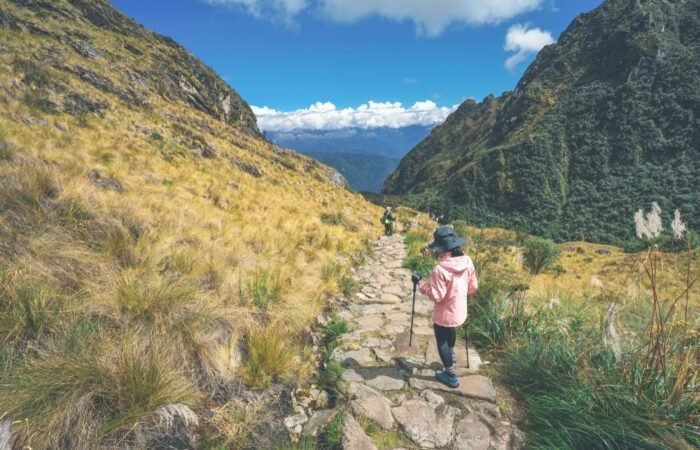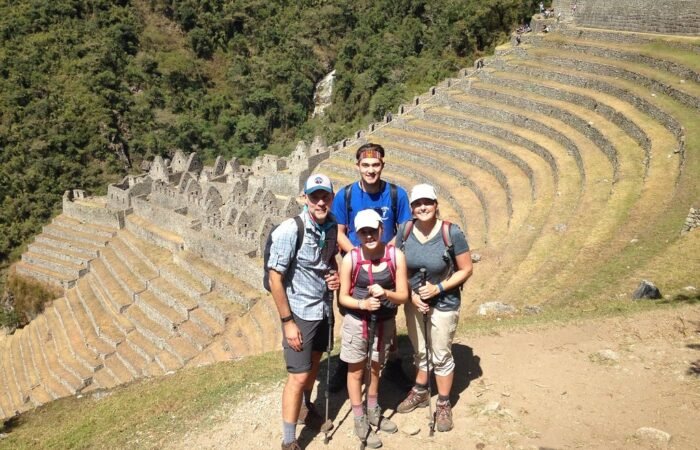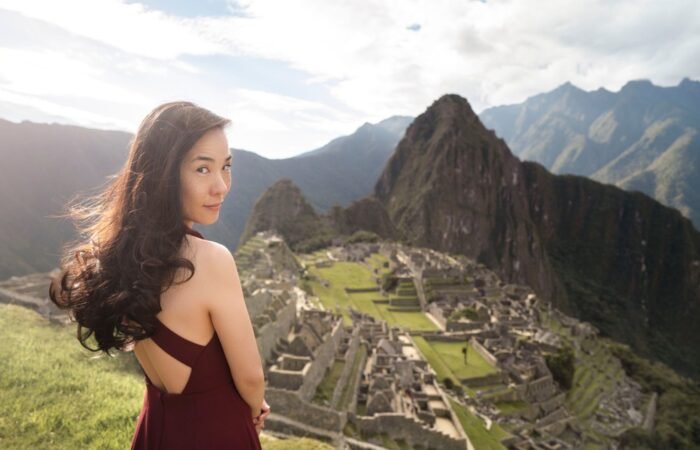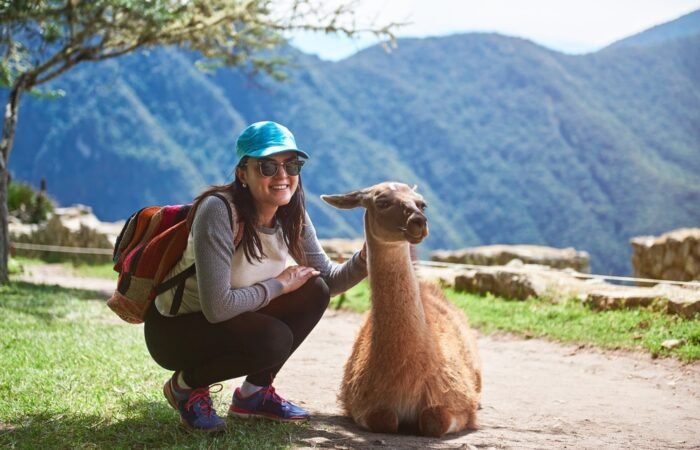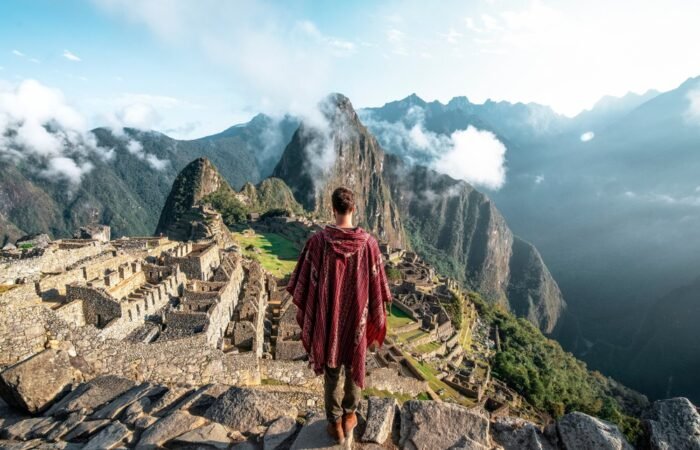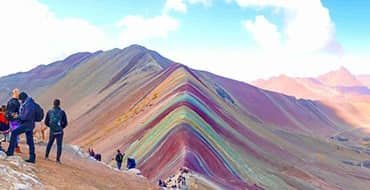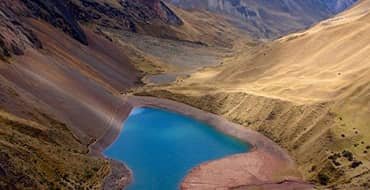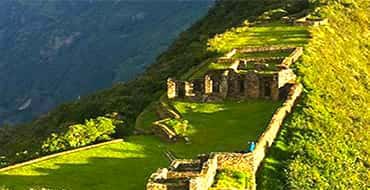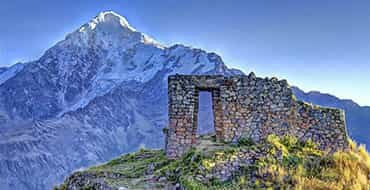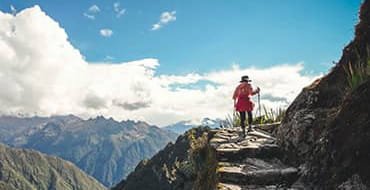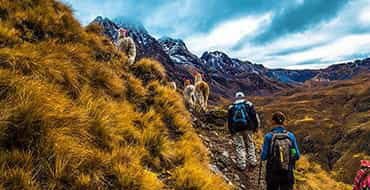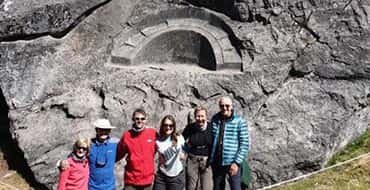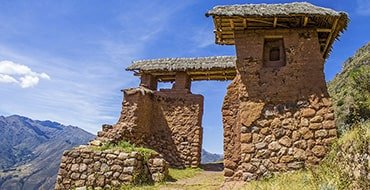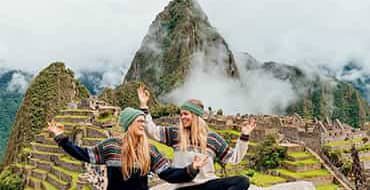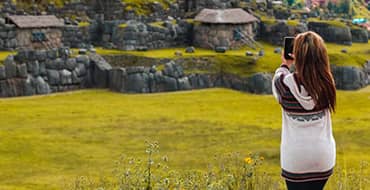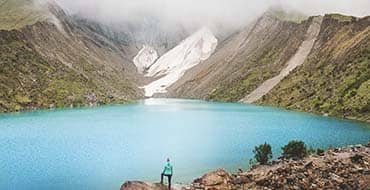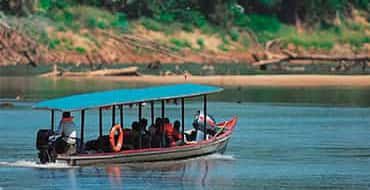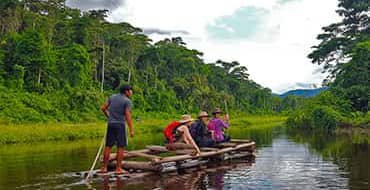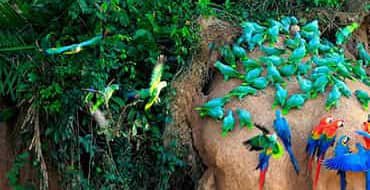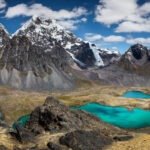

The 7 Lagoons of Ausangate Ultimate guide
The Ausangate region, located in the southern part of Peru, is a remarkable geographical area that is well-known for its stunning landscapes and rich cultural heritage. Nestled within the Andes mountains, Ausangate towers at an impressive height of over 6,300 meters, making it one of the highest peaks in the country. This majestic mountain is surrounded by a captivating tapestry of valleys, glacial lakes, and diverse ecosystems that create a unique environment teeming with natural beauty. The region is also home to the esteemed Ausangate Lagoons, which are a significant draw for travelers and nature enthusiasts alike.
Culturally, the Ausangate region holds profound significance for the local Quechua communities. These indigenous peoples maintain their ancestral traditions, offering visitors a glimpse into their distinctive way of life. The Quechua culture is deeply connected to the landscape, as they believe that the mountains and lakes are sacred entities that provide spirituality and sustenance. This harmonious relationship with nature fosters a deep respect for the environment, making the Ausangate area not only a place of great beauty but also a living testament to the traditions and beliefs of its inhabitants.
In terms of biodiversity, the Ausangate region features an array of ecosystems, ranging from high-altitude grasslands to lush wetlands. This diverse habitat supports a variety of flora and fauna, including endemic species that are found nowhere else on Earth. Travelers to the Ausangate Lagoons can experience this rich biodiversity firsthand, while enjoying activities such as trekking, birdwatching, and photography. The combination of breathtaking natural surroundings, vibrant culture, and diverse ecosystems renders the Ausangate region an essential destination for those seeking an authentic experience in Peru.


The Significance of the Ausangate Lagoons
The Ausangate Lagoons, nestled within the majestic Andes of Peru, not only serve as breathtaking natural wonders but also hold profound ecological and cultural significance. These seven lagoons, characterized by their striking turquoise waters, contribute immensely to the local biodiversity, hosting various species of flora and fauna that thrive in this unique alpine environment. The lagoons are vital ecosystems that support wildlife, with numerous birds and amphibians relying on them for survival, thus enhancing the overall ecological balance of the region.
In addition to their ecological importance, the Ausangate Lagoons are deeply rooted in Andean culture and mythology. Locals perceive these water bodies as sacred, often attributing spiritual significance to them. The lagoons are believed to be manifestations of ancient deities, and they play a vital role in traditional rituals and ceremonies held by indigenous communities. This cultural heritage fosters a strong connection between the people and their natural surroundings, highlighting the lagoons as symbols of identity and continuity for local populations.
Furthermore, the impact of climate change poses significant threats to these precious water bodies. Rising temperatures and altered precipitation patterns have already shown detrimental effects on the lagoons. Reduced water levels could disrupt the delicate ecosystems that depend on them, leading to a decline in biodiversity. In this context, the Ausangate Lagoons also contribute to local agriculture and irrigation, as the water sourced from these lagoons is crucial for crop cultivation in the surrounding areas. Farmers rely on this water for sustaining their livelihoods, particularly in high-altitude regions where arable land is limited. Hence, preserving the lagoons is essential not only for environmental health but also for ensuring food security and cultural integrity in the region.


The Seven Lagoons: An Overview
The Ausangate region in Peru is home to seven stunning lagoons, each distinguished by unique characteristics, vibrant colors, and varying sizes. These lagoons are a part of the larger Ausangate landscape, which is revered for its breathtaking beauty and diverse ecosystems. Let us take a closer look at each lagoon, providing a glimpse of their individuality and charm.
The first lagoon, Lake Otorongo, showcases a deep blue hue that captivates visitors from afar. This lagoon is smaller in size compared to others in the region but is renowned for its tranquil atmosphere and the spectacular reflections of the surrounding peaks. Not far from Otorongo is Lake Pampamarca, which is larger and boasts a striking turquoise color. Its bright waters are a result of mineral content, imperative for local flora and fauna.
Next, we have Lake Jatuncocha, often recognized for its expansive surface area. This lagoon’s color shifts throughout the day, ranging from emerald green in the morning to a stunning sapphire by afternoon. In contrast, Lake Pucacocha is unique for its intensely vivid red hue, attributed to the rich mineral deposits surrounding it, making it a favorite spot for photographers and nature enthusiasts alike.
Lake Vilcca, relatively smaller, is a serene spot characterized by its pale green water, making it an ideal location for peaceful contemplation. Meanwhile, Lake Q’omercocha stands out with its distinctive yellowish tint. This unique coloration invites intrigue and highlights the geological diversity of the region. Lastly, Lake Sinqa is renowned for its clear, reflective waters and contrasting rocky surroundings, creating a picturesque landscape that draws travelers year-round.
Each of these lagoons offers a unique experience, making the Ausangate Lagoons a true natural wonder that highlights the extraordinary beauty of Peru’s landscapes.
Laguna Ausangate


Laguna Ausangate, nestled within the majestic Ausangate range in the Peruvian Andes, is renowned for its breathtaking turquoise waters that reflect the vibrant hues of the sky. Located at an elevation of approximately 4,900 meters (16,076 feet), this lagoon is a part of a stunning ecosystem characterized by glacial landscapes, colorful mineral deposits, and a diverse array of flora and fauna. The lagoon’s striking blue color is attributed to the purity of its waters, which are fed by the melting glaciers surrounding the region.
Accessing Laguna Ausangate typically involves a trek from the nearest town, which is often the starting point for many avid hikers and outdoor enthusiasts. The journey to the lagoon offers travelers stunning panoramic views, making it an ideal opportunity for photography. The trail winds through rugged terrain, allowing trekkers to experience the unique high-altitude landscapes, including vibrant wildflowers and towering snow-capped peaks. The trek can be undertaken as part of a guided tour, ensuring that visitors have both an enriching and safe experience amid the challenges posed by the elevation.
While the lagoon is a destination in itself, it also serves as a gateway to a variety of activities that cater to nature lovers and adventure seekers. Trekking around Laguna Ausangate provides ample opportunities for wildlife observation, as the area is home to several species that thrive in high-altitude environments, including llamas and various birds native to the Andes. Additionally, photography enthusiasts will find incredible vantage points to capture the lagoon’s pristine beauty, especially during sunrise and sunset when the water takes on an ethereal glow. Whether you seek adventure or simply wish to appreciate nature’s artistry, Laguna Ausangate promises to be an unforgettable experience.


Laguna Jatun Pucacocha
Laguna Jatun Pucacocha, the second of the stunning Ausangate lagoons, is renowned for its remarkable size and breathtaking scenery, making it a must-visit destination for nature enthusiasts. Nestled in the rugged terrain of the Peruvian Andes, this lagoon is characterized by its vibrant blue waters that reflect the surrounding snow-capped peaks. With an approximate surface area that exceeds many of its counterparts, Laguna Jatun Pucacocha stands out not only for its size but also for the captivating ecosystems found here.
The unique ecosystems of Laguna Jatun Pucacocha support a diverse range of flora and fauna. The shores of the lagoon are often adorned with lush grasses and various endemic plant species that thrive in the elevated climate. Wildlife enthusiasts will delight in the opportunity to encounter numerous bird species, including the majestic Andean condor, which can frequently be spotted soaring above the lagoon. Additionally, visitors may observe charming llamas and alpacas grazing nearby, embodying the local Peruvian culture and landscape.
For those planning to visit Laguna Jatun Pucacocha, the ideal times are during the dry season, which typically spans from May to September. This period offers the most favorable weather conditions, with clear skies and mild temperatures, allowing adventurers to fully experience the serene beauty of the lagoon. However, the region is also steeped in local legends, with tales of ancient Incan rituals and the spiritual significance of the lagoon adding an intriguing layer to its allure. According to local lore, the waters of Laguna Jatun Pucacocha hold mystical properties that attract both explorers and spiritual seekers alike.
In summary, the enchanting Laguna Jatun Pucacocha presents an extraordinary opportunity to engage with Peru’s natural wonders, showcasing the harmonious blend of ecological diversity, wildlife, and cultural heritage cherished by the inhabitants of this remarkable region.


Laguna Pucacocha
Laguna Pucacocha, the third in the series of seven exquisite lagoons in the Ausangate region of Peru, is renowned for its stunning blue hues that shift remarkably with the daylight. This vibrant water body is framed by the majestic Ausangate Mountain, which towers over the landscape and complements the lagoon’s picturesque setting. The contrast between the lagoon’s brilliant blues and the stark, rugged rock formations creates a captivating spectacle that attracts nature enthusiasts and photographers alike.
The hiking trails leading to Laguna Pucacocha offer trekkers a blend of challenges and rewards. One popular trail begins near the village of Pacchanta and meanders through high-altitude landscapes adorned with diverse flora and fauna. This trek gives adventurers the chance to explore the unique ecosystems of the Peruvian Andes while marveling at breathtaking vistas. The trek is approximately 3-4 hours long, depending on fitness levels, and offers panoramic views at multiple points, making it an ideal outing for both seasoned hikers and casual walkers.
For the photography enthusiasts, the area surrounding Laguna Pucacocha presents numerous opportunities to capture awe-inspiring images. Early mornings provide soft lighting against the lagoon’s vivid colors, while late afternoons enhance the shadows cast by the surrounding peaks. Furthermore, the reflection of the rock formations on the water’s surface during certain times of the day creates a mirror-like effect that is particularly striking. Photographers are encouraged to scout various vantage points along the trail to find the perfect angles that frame both the lagoon and the impressive backdrop of the Andes.


Laguna Otorongo
Laguna Otorongo is one of the most captivating lagoons within the Ausangate region in Peru, renowned for its remarkable natural beauty and diverse ecosystem. This lagoon is nestled within a stunning mountainous landscape that is not only visually striking but also home to a variety of wildlife. As visitors approach Laguna Otorongo, they are often greeted by the picturesque views of vivid blue waters, contrasting dramatically with the surrounding rocky terrain and lush ecosystems.
The distinctive feature of Laguna Otorongo lies in its potential for wildlife observation. The area serves as a habitat for several native animal species, including vicuñas, a type of wild camelid, and various birds, many of which are unique to this region. Bird enthusiasts may find themselves particularly entranced by the opportunity to spot species such as the Andean condor and the colorful hummingbirds flitting among the flowers. The serenity of the lagoon provides an ideal environment for slow exploration, perfect for those aiming to connect with nature and observe the local fauna in their natural habitat.
For visitors to Laguna Otorongo, hiking is a popular activity, offering immersive experiences through the breathtaking trails surrounding the lagoon. The journeys lead adventurers through diverse landscapes, ranging from rugged mountain paths to lush valleys filled with indigenous flora. Along the way, travelers have the chance to engage with local culture, as nearby villages reflect the rich traditions and lifestyles of the Andean communities. This adds depth to the visit, allowing guests to appreciate the profound connection between the natural environment and the local inhabitants.
Ultimately, Laguna Otorongo is a destination that exemplifies the harmony between nature and culture, making it an essential stop for anyone exploring the Ausangate Lagoons.


Laguna Chaqllan: A Serene Escape
Laguna Chaqllan, often referred to as the fifth lagoon among the magnificent Ausangate Lagoons, embodies serenity and beauty in its most captivating form. Nestled within the Ausangate Mountain range in Peru, this tranquil body of water enchants visitors with its stunning azure hues, which reflect the surrounding snow-capped peaks and expansive skies. The lagoon’s tranquil environment is characterized by the gentle sounds of water lapping against its shores, creating a soothing backdrop for those who seek solace in nature.
The physical attributes of Laguna Chaqllan contribute to its enchanting allure. The lagoon stretches across a considerable expanse, with its crystal-clear waters inviting exploration and contemplation. Surrounded by lush vegetation and the occasional burst of wildflowers, the landscape provides a vibrant contrast to the tranquil waters, each element harmonizing to create a picturesque setting. A pathway meanders around the lagoon, allowing visitors to immerse themselves fully in its serene ambiance while observing the diverse flora and fauna that thrive in the area.
However, the beauty of Laguna Chaqllan is not without its challenges. As tourism in the region increases, the importance of preserving its natural environment becomes paramount. The impact of human activity poses threats to the delicate ecosystem surrounding the lagoon. Efforts must be made to ensure that visitors approach this natural wonder with respect and awareness, practicing sustainable tourism that minimizes their footprint. By advocating for responsible visitation, we can enjoy the breathtaking beauty of Laguna Chaqllan while safeguarding its future for generations to come. The preservation of this lagoon highlights the need for a balance between nature and tourism, emphasizing the role of education in promoting environmental stewardship.


Laguna Q’omercocha
Laguna Q’omercocha, also known as the Green Lagoon, stands out as a breathtaking feature among the Ausangate Lagoons in Peru. This remarkable body of water is characterized by its striking emerald hue, which is attributed to the minerals dissolved in its depths. The lagoon is approximately 4,100 meters above sea level, providing visitors with an awe-inspiring view framed by the majestic Andes mountains. This high-altitude environment adds another layer of beauty to the lagoon’s surroundings, filled with a rich variety of flora and fauna that thrive in this unique ecosystem.
The lush vegetation encompassing Laguna Q’omercocha includes a mix of native plants, such as grasses, shrubs, and flowering species. These plants not only enhance the scenic beauty of the area but also serve as a vital habitat for local wildlife. Birdwatchers may be particularly pleased, as the lagoon is home to various avian species, including Andean ducks and other migratory birds. The presence of these animals adds an element of dynamism to the tranquil setting, inviting nature lovers to immerse themselves in the wonders of the natural world.
Culturally, Laguna Q’omercocha holds significant importance for local communities, often regarded as a sacred site. The indigenous peoples surrounding the lagoon have deep-rooted traditions that connect them to the land and its water. Rituals and festivals are frequently held, celebrating the lagoon’s beauty and the resources it provides. Additionally, the scenic trekking routes leading to Laguna Q’omercocha allow visitors to engage with the local culture while exploring the pristine landscapes. Adventurous travelers can embark on challenging hikes, witnessing firsthand the breathtaking vistas and discovering age-old traditions that enrich their experience.


Laguna Murucocha
Laguna Murucocha, the final lagoon in the series of Ausangate Lagoons, is a breathtaking example of the natural beauty that Peru has to offer. Nestled in a remote area of the Andes, this pristine lagoon is often overlooked by travelers, making it a hidden gem for those willing to venture off the beaten path. The lagoon is characterized by its strikingly clear turquoise waters, which contrast beautifully against the majestic backdrop of snow-capped mountains, creating a serene and captivating landscape.
To reach Laguna Murucocha, visitors typically start their journey from the town of Cusco, which is the nearest major city. A common route involves taking a bus or arranging a guided tour to the Ausangate region. From there, a trek through picturesque valleys and rugged terrain is required, often taking several hours. It’s advisable to travel with a guide familiar with the area, as they can provide insights into local culture and the unique flora and fauna that inhabit the region. Additionally, they can ensure that safety protocols are followed during the hike.
In terms of climate, visitors can expect cool temperatures, particularly during the evenings and nights, which can drop significantly even in summer. It is recommended to dress in layers and prepare for sudden weather changes, as rain and strong winds can occur at any time. The scenery surrounding Laguna Murucocha is nothing short of spectacular, featuring lush green pastures and a diverse array of wildlife, including Andean condors and grazing alpacas.
Overall, a visit to Laguna Murucocha is not just a trip to a lagoon; it is an immersive experience in one of Peru’s most stunning natural environments. The remoteness of this lagoon provides the opportunity for tranquility and reflection, making it a perfect destination for nature lovers and those seeking adventure away from the crowds.
